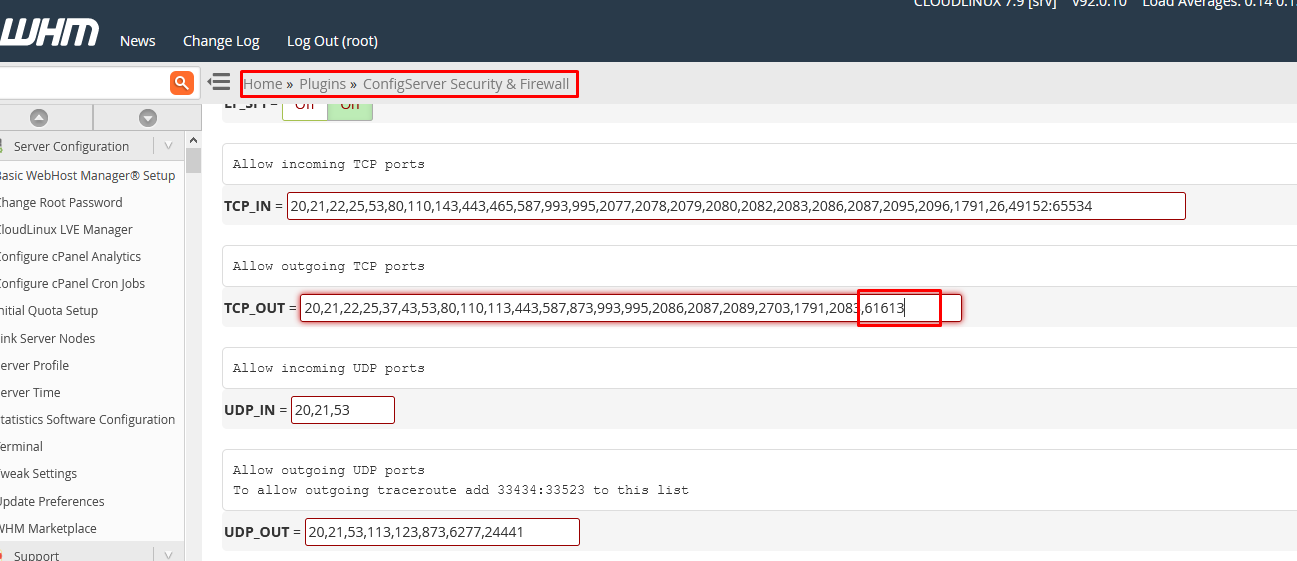

- #Cpanel port software
- #Cpanel port password
The new email account forwarder will appear in the Current Forwarders section. Enter the email address to forward the messages to. Access the Forwarders menu from your webmail dashboard and select Add Forwarder. It forwards incoming email messages from different email accounts to a designated one. The Email Forwarders feature benefits users who have multiple email addresses. Add a dummy message to the text box and hit Test Filter. Select Edit to modify the filter or Delete to remove it.Īfter creating a filter, the Filter Test section will appear. The new filter will appear in the Current Filters section. Add the filter name and configure its rules and actions. Go to Email Filters from the webmail interface, and select Create a New Filter. It handles simple filters better than complex ones, so we recommend creating multiple filters instead of just one with a lot of variables. Access the feature’s interface to create, manage, modify, test, and remove filters.ĬPanel uses Exim as its mail transfer agent. The Email Filters feature helps efficiently manage incoming email messages. The new autoresponder will appear in the Current Autoresponders table. Lastly, set the start and end dates for when the autoresponder will be active. Write your response in the Body section, and check the HTML box if your message contains HTML code. We recommend using utf-8 for the Character Set value. If you have multiple email accounts, pick one from the drop-down menu. Input the sender in the From: field and the Subject for your message. Enter the interval between emails to be sent to the same email address. Go to Autoresponders from the webmail interface. 
The following tutorial will help you create and manage a mail autoresponder via cPanel: Each email address can only have one autoresponder. Autoresponders can be employed whenever you’re unavailable, for example.

This feature lets you send automated emails. We’ll cover what each of them does in the following sections. The cPanel webmail has several features to streamline email account management. The webmail login page should look like this:Ī Look Into cPanel Webmail Application Features
#Cpanel port password
There, you will have to enter the email address and password for your email account. Alternatively, use Server_ip is the placeholder for the IP address of your hosting server.īoth of these URLs will take you to the webmail login page. This method uses a server’s IP address provided by your hosting provider.Įnter the URL (HTTPS port) or (non-HTTPS port). Accessing Webmail Through the Server’s IP Address The following sections will cover each of these methods. The cPanel webmail account is accessible in three different ways ‒ using the server’s IP address, your domain name, or through the control panel’s Email Accounts section.
A Look Into cPanel Webmail Application Features. Accessing Webmail via cPanel’s Email Accounts Section. Accessing Webmail Through Your Domain Name. Accessing Webmail Through the Server’s IP Address. In this case, you need to manually open these ports as per the applications/routers instruction manual. #Cpanel port software
However, some more advanced software firewalls and most hardware firewalls(usually built into your router/modem) do not offer these prompts prompt. Most software firewalls will prompt you when you first try and access these ports so you just need to click allow. If you are having trouble accessing cPanel, emails, FTP, etc, you may be having firewall port forwarding issues as certain ports need to be activated for these services to work. Port 22 > SSH (you will get a lot of ssh attacks if you leave it open. The following additional ports should also be kept open: Port 80 > Apache HTTP web server. If you are using a firewall make sure to unblock those ports in TCP.







 0 kommentar(er)
0 kommentar(er)
